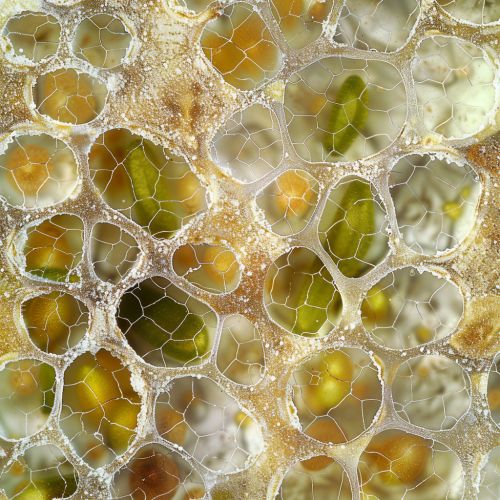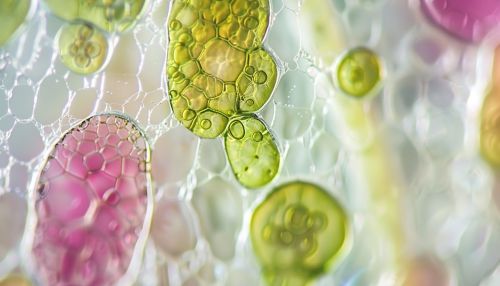Ground tissue
Introduction
Ground tissue is one of the three primary types of plant tissue, along with dermal tissue and vascular tissue. It functions in photosynthesis, storage, and support. The majority of a plant's biomass is made up of ground tissue, which is directly involved in the plant's primary metabolic functions.
Types of Ground Tissue
Ground tissue can be classified into three types: parenchyma, collenchyma, and sclerenchyma. Each type has a specific structure and function within the plant.
Parenchyma
Parenchyma cells are the most common type of ground tissue. They are typically thin-walled and have large central vacuoles. Parenchyma cells are involved in many functions of the plant, including photosynthesis, storage, and tissue repair. They are capable of cell division, allowing for growth and wound repair.
Collenchyma
Collenchyma cells are elongated cells with unevenly thick cell walls. They provide flexible support for the growing parts of plants, such as young stems and leaves. Collenchyma cells are alive at maturity and can stretch and elongate with the plant parts they support.
Sclerenchyma
Sclerenchyma cells have thick, lignified cell walls and are often dead at maturity. They provide rigid support to the plant and are typically found in stems, roots, and the hard shells of nuts and seeds.


Functions of Ground Tissue
Ground tissue performs a variety of functions in the plant, depending on the type of cells and their location within the plant.
Photosynthesis
In leaves, the ground tissue forms the mesophyll, which is the primary site of photosynthesis in the plant. The parenchyma cells of the mesophyll contain chloroplasts, which capture light energy and convert it into chemical energy through the process of photosynthesis.
Storage
Ground tissue is also responsible for the storage of nutrients and water in the plant. Parenchyma cells in the roots, stems, and leaves can store starch, proteins, and other nutrients. Some plants have specialized parenchyma cells, known as aerenchyma, that store air and help the plant float in water.
Support
The collenchyma and sclerenchyma cells of the ground tissue provide structural support to the plant. Collenchyma cells provide flexible support to growing plant parts, while sclerenchyma cells provide rigid support to mature plant parts.
Development of Ground Tissue
Ground tissue originates from the meristem, a type of plant tissue that is capable of continuous cell division. The meristem gives rise to all the primary tissues of the plant, including the ground tissue.
Conclusion
Ground tissue plays a crucial role in the life of a plant, contributing to photosynthesis, storage, and support. Understanding the structure and function of ground tissue can provide insights into the growth and development of plants, as well as their responses to environmental conditions.
